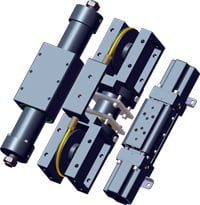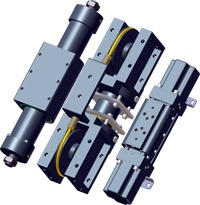
 Actuators move or control devices or system components. Linear actuators operate in a straight line. They can be powered with air, fluid, electricity, or even the human hand—although for industrial applications, a hand crank is a bit rustic. Let us clarify for you the differences between pneumatic and electric linear actuators.
Actuators move or control devices or system components. Linear actuators operate in a straight line. They can be powered with air, fluid, electricity, or even the human hand—although for industrial applications, a hand crank is a bit rustic. Let us clarify for you the differences between pneumatic and electric linear actuators.
In some ways, both types of actuators are the same. Both electric and pneumatic designs are compact, and they are both cost-efficient, though in somewhat different ways. Electric actuators offer excellent design flexibility when it comes to control options, good for when you need extreme precision. Pneumatic actuators are known for their quick response and defined stroke. They can deliver force anywhere between 4,000 and 2,000 pounds.
How do you decide?
Force and speed are the two primary factors you should consider in choosing which type of linear actuator is best for your application. Pneumatic designs can deliver more speed and force per unit than electric actuators. Other important functional factors include:
- Acceleration and deceleration
- Load weight and pressure
- Stroke length
- Positioning
- Required mid and end-of-stroke load support
- Potential external force or bending movement
Of course, it's important to consider initial and operating costs. For instance, electrical actuators can cost more up front but may cost less to operate. They can be beneficial if the application does not require a very large number of actuators, or just a few.
Pneumatic cylinders are much less expensive, but you may experience longer downtime when changeovers are needed. Ultimately, cost-efficiency comes down to your operating cost per cylinder. For example, using a high-capacity compressor to power a few small pneumatic cylinders wastes money, whereas it would be a cost-efficient choice to power many pneumatic devices.
One thing that is important to note as you’re deciding which type of linear actuator is best, is that you won’t be able to change your mind once you make a design decision. Switching from an electrical to a pneumatic linear actuator is difficult and expensive.
We have the pneumatic actuator for you
W.C. Branham manufactures a broad line of pneumatic actuators. They can be configured in many different ways, to match your specific application requirements. And if you can't find what you're looking for on our website, we are always available to answer your questions or help you solve a design challenge, just contact our experts today!
Don't forget, we can custom-design a solution that will perfectly fit what you need.


